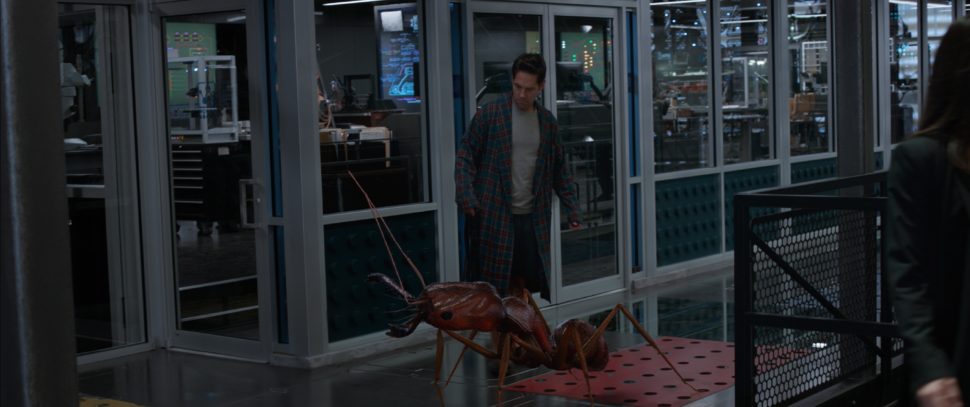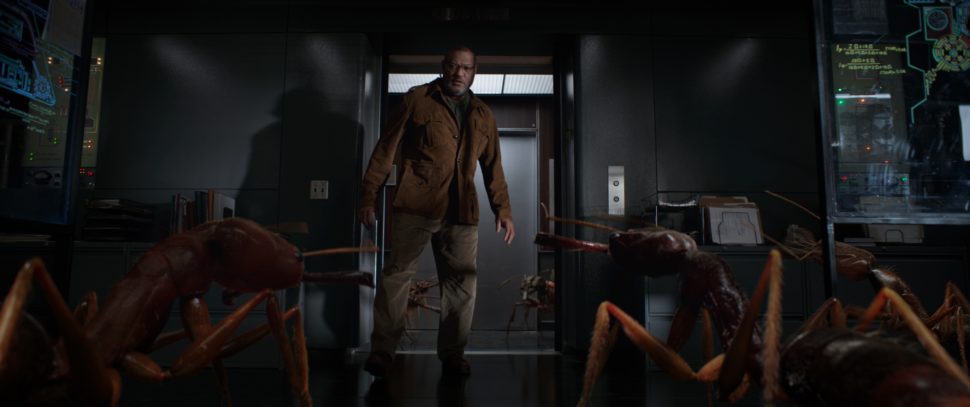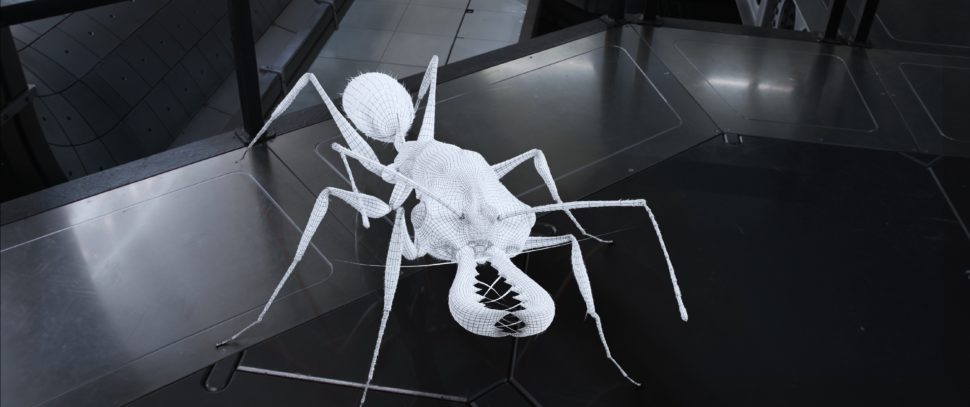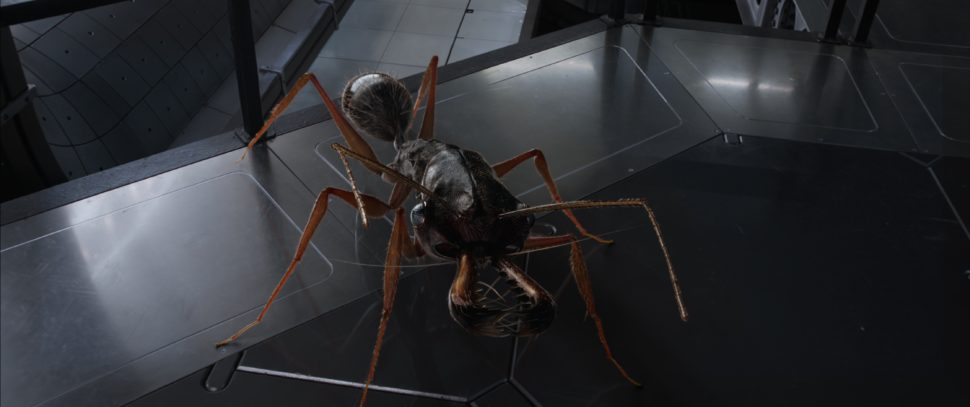
Ant-Man and The Wasp
Cinesite once again united with Marvel Studios to help visualise the unimaginable for Ant Man & the Wasp, a Marvel Cinematic Universe feature directed by Peyton Reed.
In the aftermath of “Captain America: Civil War,” Scott Lang (Paul Rudd) grapples with the consequences of his choices as both a Super Hero and a father. As he struggles to rebalance his home life with his responsibilities as Ant-Man, he’s confronted by Hope van Dyne (Evangeline Lilly) and Dr. Hank Pym (Michael Douglas) with an urgent new mission. Scott must once again put on the suit and learn to fight alongside The Wasp as the team works together to uncover secrets from their past.
In a project spanning eight months Cinesite’s Montreal team delivered six key VFX sequences in the film. One of the main aspects of the team’s work was bringing the super-sized trap-jaw ants to life in Dr Hank Pym’s laboratory where they are assisting the scientist in his secret refuge in a disused building in Oakland.
Under the supervision of Stephane Paris Cinesite’s artists got to flex their creative muscles showcasing their advanced ability at storytelling through CG and animation with some fun sequences involving super-sized ants. In one of Cinesite’s key sequences we see 20 giant ants working in Hank’s lab building the quantum tunnel using different props like power drills, cases, cables and a welding backpack.
The team were tasked with designing the realistic ants which Ceretti was looking to develop from the first film. Cinesite’s animation supervisor Scott Holmes carried out extensive research to create a walk cycle library of various postures and movements of how the ants should walk and interact with their environment and people to make them believable at the larger than life-size. To achieve performance and characterisation Cinesite’s modeling lead, James Stone sculpted and modelled the ants with strong physical differences so the audience could easily identify them.
The lookdev team then added subsurface scattering light transmissions to define roughness. Such variations to the true nature of trap-jaw ants was needed to prevent them from appearing too clean and plastic-looking when scaled up. It was not only their head shapes and proportional differences between their thorax and abdomens that varied but also their colors. To achieve the photo real finish the translucency was adapted according to the maturity of the ants by including internal shapes to simulate the chitin thickness and help the shading work. Each hero Ant was made of 82,000 polygons. To shade the ants, the team worked with their integrated Arnold render solution. As one of several vendors handling visual effects on the film, Cinesite shared ant and lab assets with other studios. “We built things in a clean way that would be fairly easy to reproduce and wrote some documentation as to how we were achieving a certain look,” said Paris. “The biggest challenge was creating the ants at a photo realistic quality and striking a balance in the animation between the slightly exaggerated weighting and true to nature movement of the ants to make them look believable despite their large size.”
To help overcome some of the challenges the artists encountered whilst creating the super-size ants Cinesite’s development team created an automated render system articulated around Cinesite’s bundle system. Based on the final textures, a simpler shading version of the ants and a simple lighting set-up, the team could present the animation termed ‘Bundle Renders’ in a more realistic integrated way to Ceretti.
Cinesite’s trap-jaw ant sequences take place within the incredible interior of Hank Pym’s lab, which is made from improvised devices made of large (or small) items powering the equipment and holding it all together. Using CG the team extended the practical set in many shots featuring the giant trap-jaw and carpenter ants on the upper and lower floors. Artists added and removed various props such as a giant AA battery pack and RC shock absorbers to match the ones that were built practically on set. In some instances, the artists needed to remove practical parts of the onset lab such as the engine pistons, replacing them with animated CG versions to allow them to control the prop interaction with the CG ants who are using a CG suspended pulley system to replace the tip of the engine piston.
A key feature of the Pym’s lab is the Antenna Array which Hank and Hope are using to locate Janet van Dyne in the Quantum realms. Cinesite updated the Antenna replacing the onset screens completely with CG. The antenna’s model and textures were enhanced by lookdev, making the metal panels appear covered with a liquid crystal based layer to enable the illumination and the animation of text on the moving screens in a logical way to the audience. As with all things in Pym’s lab, the Antenna Array has been upcycled so the team needed to reflect it’s mechanical quality in the animation so the screens and panels didn’t appear weightless and automated.
Outside of Hank’s lab Cinesite also created a suburban San Francisco environment where Scott has been placed under house arrest by the FBI. Scott and his daughter ride a sled down the outdoor stairs of a terraced house. The team extended the street and neighbourhood environment using lidar scans and 360 degrees reference photos from the San Francisco block to deliver a 2.5D set extension.
- Release date: (USA) 6th July 2018
- Studio: Marvel Studios
- Director: Peyton Reed














